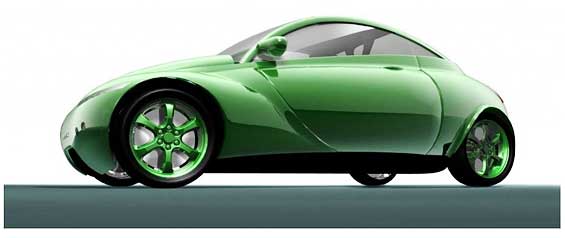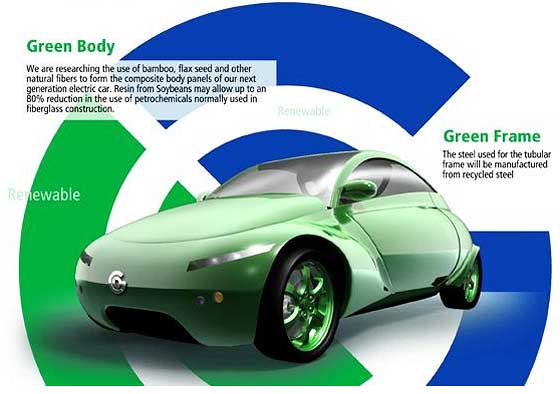| |
Genovation G2 Plug-In Hybrid
The Genovation G2 Plug-In Hybrid is one of a new generation
of innovative, green plug-in hybrid electric vehicles (PHEVs)
that runs on batteries that can be charged from a regular wall
power socket, as well as from other sources. The company exists
to develop and produce PHEVs for the typical environmentally
caring family, using safe new technologies. The PHEV is not
a new concept, but the Genovation G2 doesn't just focus on isolated,
experimental aspects of the design.

Genovation has defined a set of factors it takes into account
when evaluating technologies for its G2. These are what it calls
its SCWARE factors, from the initial letters of Safety, Cost,
Weight, Availability, Reliability, and Ease of use and maintenance.
The company built up a level of expertise with its G1 vehicles,
which were modified, pre-owned, Ford Focus cars. These had the
internal combustion engine replaced by components to drive the
engine electrically, giving buyers the opportunity to own a
car that looked conventional but was electrically powered.
Not only is the G2 powered by batteries, but all aspects of
the design are being looked at to see where natural and recycled
materials can be used. Bamboo and jute fibres, bonded with soy
based resins are being considered for the manufacture of body
panels. Carpeting made of recycled plastic bottles will be marketed
as proof of the G2's green credentials, rather than as a cost-saving
measure. The company feels that many existing big name car makers
consider the use of these materials as a green step too far.
These companies are not prepared to settle for the color inconsistency
that can result from recycled materials.
The Genovation G2 Plug-In Hybrid, in common with other hybrid
vehicles, includes a gasoline powered engine. This acts as what
the manufacturer terms a range extender. This 3-cylinder engine,
custom designed by Lotus, drives an electric generator. If you're
driving long distances, the extender will kick in and charge
the batteries while you travel. Note that the gas engine never
drives the wheels directly, it only ever turns the generator
to charge the batteries. Weighing just over 1.5 tons, the car
will go from 0-60mph in just under 7.5 seconds.

A major technological challenge has been the development of
a thermal management system for energy efficiency through optimum
use of heat. Where the heat is generated as a by-product, from
the motor and from the inverter, for instance, it can be used
for passenger comfort and for keeping batteries above freezing
before charging in sub-zero temperatures. The main objective
is to prevent heat energy being wasted by sending it into the
atmosphere.
The Genovation G2 Plug-In Hybrid is driven by AC induction
electric traction motors which are controlled from the inverter.
This device generates AC power using the direct current of the
batteries. The main power batteries are Lithium Iron Phosphate,
the only type Genovation consider safe under their SCWARE factors.
The auxiliary batteries that power the vehicle's control and
entertainment circuits are 12v types charged from the high voltage
batteries via a DC-DC converter. The finishing touch comes in
the shape of the Kinetic Energy Recovery System that takes the
energy derived from braking to drive the induction motors as
generators to charge the batteries.
|
|


